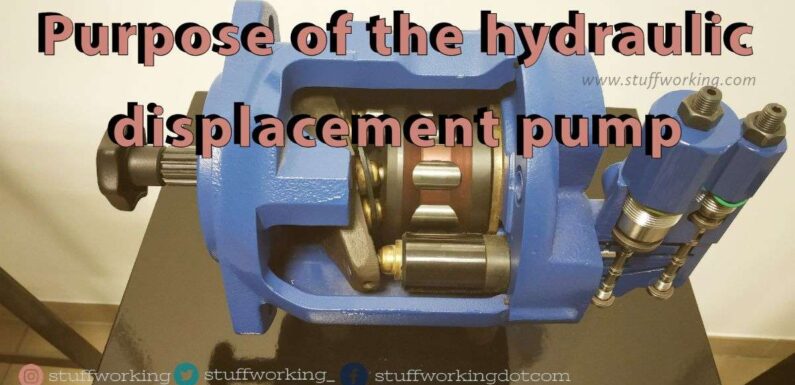
The purpose of the hydraulic displacement pump is to transform mechanical energy into hydraulic energy. But simply saying that it converts energy is not a practical answer. So, in this article, we will get the answers to the following questions.
1. What is the pump’s basic purpose in a hydraulic system?
2. What are the different types of hydraulic displacement pump?
3. What is the most important design and how hydraulic displacement pump works?
What is the pump’s basic purpose in a hydraulic system?
To understand pump’s basic purpose, let’s see an example.

Here you can see an external gear pump. There are two gears, one is the driver and the other one is the driven gear. Also, there are two ports, one is the low-pressure port (suction) and the other is the high-pressure port (delivery).
The external gear pump is the simplest and easy to understand. There are many different pumps, but all of them operate on the same principle. They convert mechanical energy, rotational motion for example, into hydraulic energy, in other words into flow and pressure.
Simply, the purpose of the hydraulic displacement pump is to draw the liquid and creates a flow. But how the pump do that?
As you can see the gear wheels gather the liquid between two adjacent teeth and transport it. It flows into the area behind the gear wheels. The gear wheels closed up against each other so that the liquid cannot be pushed back. Hence, due to restriction in flow, the pump creates pressure.
It is important that the cross section of the pump’s suction side must larger than delivery side. Thus the danger of cavitation is reduced.
What are the different types of hydraulic displacement pump?
The types of hydraulic displacement pump are:
- Positive Displacement pump
- Non-positive displacement pump (or dynamic pump)
Other related articles
- Hydraulic system Designing Tips for Engineers
- formula for converting cc/rev to LPM.
- Difference between pressure relief valve and pressure reducing valve